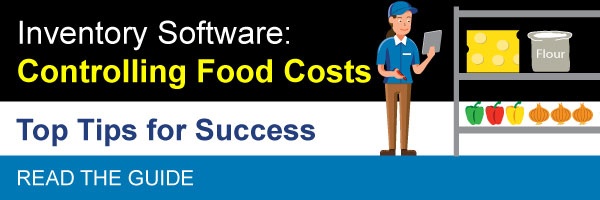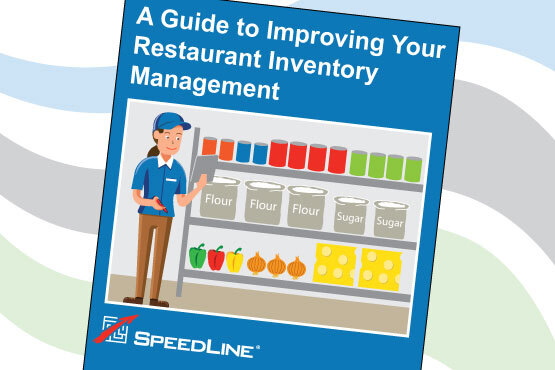Inventory management isn’t a new concept. In fact, it’s a responsibility that business owners across nearly every industry are intimately familiar with. Why does it continue to be a headache for so many? After all, efficiently managing your restaurant's inventory not only helps you reduce costs, but also ensures a smooth operation and higher customer satisfaction. This post explores the best practices to optimize your inventory management system while reducing the associated workload (and stress).
Embrace Technology
Although managing inventory in a pizzeria is no simple task, 46% of small businesses don’t track inventory or use a manual method (like pen and paper, or spreadsheets). In today’s fast-paced restaurant environment, owners must adopt technologies to help them streamline and hone their processes. Invest in POS software like SpeedLine that has a robust inventory management component that can automate tasks such as tracking stock levels, generating real-time reports, and even predicting stock depletion. In turn, this empowers you to make data-driven decisions, restock efficiently, and minimize wastage.
Conduct Regular Inventory Audits
Conducting routine inventory audits is essential to maintain accurate records. Set a schedule to perform physical counts of your stock regularly. This practice helps identify discrepancies between recorded and actual stock levels, signs of employee theft, potential risks of spoilage, and optimize order quantities. Moreover, regular audits to identify top-selling menu items, enabling you to adjust your purchasing patterns accordingly.
Implement First-In, First-Out (FIFO) Method
To minimize waste and avoid stock spoilage, implement the First-In, First-Out (FIFO) method. For fresh ingredients, SpeedLine’s Make/Ready/Discard slips printed from your POS can be used to quickly label each prep item with the the date it was made, when it is ready to be used, and when it needs to be discarded. FIFO ensures that items do not expire on your shelves and that your customers always receive the freshest products.
Categorize and Prioritize Items
Building on the FIFO method, categorize your inventory into perishable and non-perishable items helps you prioritize stock management. Perishable goods must be monitored closely to avoid wastage, while non-perishable items can be stocked in larger quantities. Additionally, categorizing items by frequency of use or popularity enables you to optimize storage and placement for efficient restocking and access.
Set Par Levels
Establishing par levels for each item is a crucial practice to maintain optimal inventory levels, ensuring you have stock for necessary ingredients at all times. These levels should be based on historical sales data, seasonal demand fluctuations, and supplier lead times. By setting these levels, you can avoid stock-outs and overstocking, ultimately leading to cost savings and increased customer satisfaction.
Build Strong Supplier Relationships
A reliable and efficient supplier network is the backbone of any successful restaurant inventory management system. Cultivate strong relationships with your suppliers, and negotiate favorable terms to secure competitive prices and timely deliveries. Regular communication with suppliers also helps you stay informed about market trends and potential disruptions, ensuring you can adapt your inventory strategy accordingly.
Train Your Staff
Effective inventory management requires a team effort. Provide proper training to your staff on the importance of accurate inventory tracking, storage protocols, and the use of inventory management software. Encourage open communication and create a system where employees can report potential issues or discrepancies in a timely manner.
Conclusion
Improving your restaurant's inventory management practices can significantly impact your bottom line and overall efficiency. By embracing technology and implementing a few best practices, you can take control of your inventory management and simplify your restaurant workflows. Remember, a well-organized inventory system not only saves money but also ensures a delightful dining experience for your customers, driving loyalty and positive word-of-mouth recommendations. Invest in your inventory management today and reap the rewards for years to come.
Ready to learn more about how you can optimize your restaurant’s inventory costs? Read Controlling Food Costs: Top Tips for Success.
Posted on Wed, Jul 26, 2023 @ 08:07 AM.
Updated on July 26, 2023 @ 3:00 PM PST.

